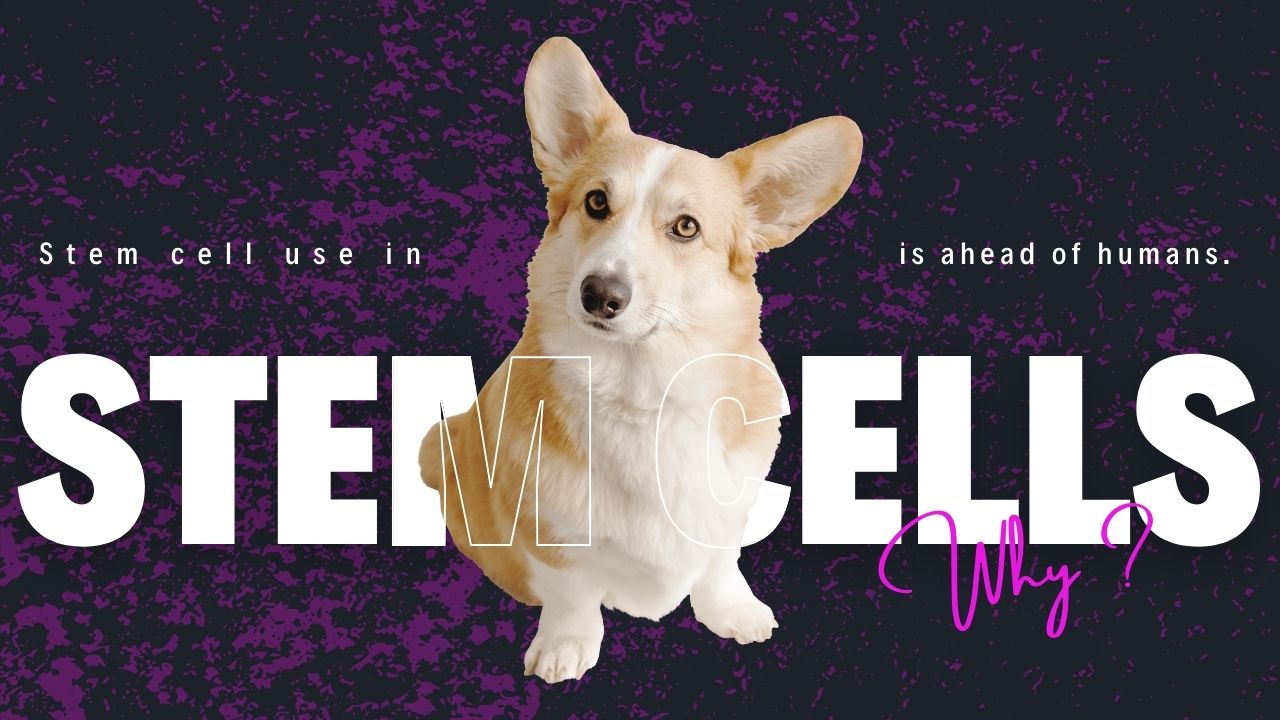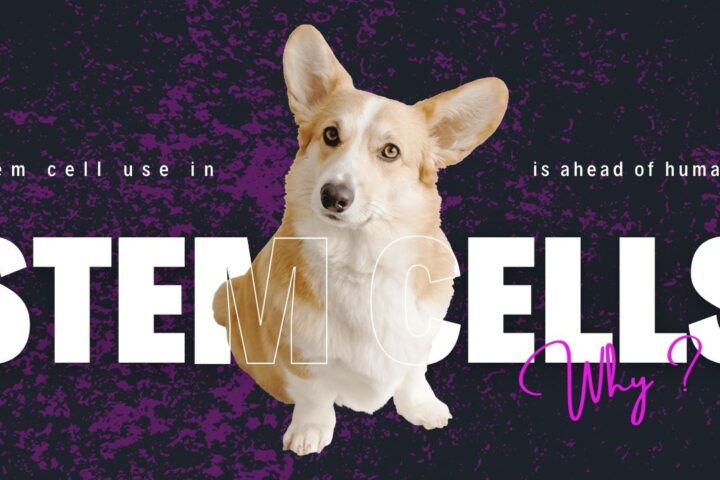Stem cell therapy has been at the forefront of medical research for decades, offering the potential to regenerate damaged tissues and organs, treat chronic diseases, and alleviate pain. While many of us are familiar with its potential in humans, the progress in this area has been slow and uncertain. However, when we shift our focus to animals, particularly dogs, we see much more promising results.
The State of Stem Cell Research in Humans: Slow and Steady
As highlighted in this comprehensive analysis, the scientific community is still trying to unravel the full potential of stem cells in human therapies. Clinical studies are ongoing, but progress has been slow due to the complexity of stimulating stem cells to differentiate into specific cell types. This lack of certainty has led to a mix of hope and skepticism among the public.
A significant factor contributing to the slow development of human stem cell therapies is the ethical and regulatory challenges surrounding embryonic stem cells (ES cells). According to a Nature article, research with human ES cells has been particularly constrained by ethical concerns since these cells are derived from donated human embryos, raising moral questions about the destruction of potential life. Furthermore, the regulatory landscape governing stem cell research is strict and varies from country to country, leading to delays in approval processes and limitations on where and how research can be conducted.
Beyond ethics, the scientific complexity of understanding how stem cells differentiate and integrate into the body adds to the delays. The challenge of directing stem cells to reliably transform into specific cell types and ensuring they function properly once transplanted is still a major hurdle. These obstacles mean that while the promise of stem cell therapies for humans is significant, it remains a long-term goal, with the path forward slowed by both scientific and regulatory barriers .
Animal Stem Cell Therapy: A Fast-Growing Field
Interestingly, while research into human applications has been slow, veterinary applications have surged ahead. In particular, stem cell therapy for dogs has gained significant traction.
At Chulalongkorn University in Thailand, groundbreaking research led by the Faculty of Veterinary Science has shown promising results in using mesenchymal stem cells (MSCs) derived from various sources, such as fat tissue and bone marrow, to treat dogs suffering from chronic osteoarthritis and degenerative joint diseases. The university’s research focuses on the application of autologous stem cell therapy—where a dog’s own stem cells are harvested, processed, and re-injected into the affected joints.
The research team has been treating dogs with advanced stages of osteoarthritis, a common condition that causes pain and reduced mobility in pets. According to their findings, within weeks of treatment, many of the treated dogs showed remarkable improvements in terms of pain reduction, increased mobility, and a higher overall quality of life. Some pets who had previously been unable to walk or climb stairs were able to resume these activities post-treatment.
The university’s Mesenchymal Stem Cell Therapy Unit specializes in using this regenerative approach to treat not only osteoarthritis but also tendon injuries, skin conditions, and other inflammatory diseases in animals. The key to their success lies in the anti-inflammatory and tissue-regenerative properties of mesenchymal stem cells, which help repair damaged cartilage and suppress immune reactions that exacerbate joint degeneration.
Why Chulalongkorn’s Research Stands Out
Chulalongkorn University’s stem cell research program stands out for several reasons:
- Rigorous Methodology: Their studies are conducted with strict scientific oversight, ensuring that the treatments are both safe and effective. By focusing on autologous treatments, they minimize the risk of rejection and adverse reactions, which can sometimes occur with stem cell therapies.
- Holistic Veterinary Care: The treatments at Chulalongkorn are often part of a larger, more comprehensive care plan that includes physical therapy, nutrition, and pain management, allowing for a well-rounded recovery process.
- Accessible Treatment: The university has made stem cell therapy accessible to the public, offering treatments through their veterinary hospital for pets suffering from chronic conditions that have not responded well to conventional treatments.
The Chulalongkorn University research emphasizes that the procedures are relatively simple and effective for specific ailments in dogs. Vets are already offering this treatment to pets suffering from joint diseases and other degenerative conditions, with promising results. This stands in contrast to the slower progress we’ve seen in humans, where clinical trials often take years, and the results can be inconsistent.
Stem Cell Banking: The Business Side of the Industry
While stem cell therapy for end users is still developing, the stem cell banking industry has already found its niche, particularly for future medical use. Medeze Stem Cell, a Thai public company, plays a significant role in this aspect. Rather than selling stem cells directly for therapeutic purposes, Medeze’s primary source of revenue comes from stem cell banking. This allows individuals to store their stem cells for potential future medical needs, banking on the promise that treatments will eventually catch up to the potential of stem cells.
Medeze offers stem cell storage services from sources such as umbilical cord blood and adipose tissue, securing these valuable cells for use when therapies become more advanced. The fact that companies like Medeze have found success in banking rather than selling stem cells for treatments highlights the current state of the field: While the therapy itself is not yet fully realized for widespread human use, the long-term potential is enough to fuel an entire industry centered on preparation for that future.
Why the Difference?
There are several reasons why stem cell therapy has advanced more quickly in veterinary medicine than in human medicine:
- Regulatory Differences: Regulations for animal treatments are generally less stringent than those for human therapies. While this ensures that new treatments can be made available more quickly, it also means there is less oversight.
- Ethical and Scientific Challenges in Human Research: As noted earlier, the use of human embryonic stem cells raises significant ethical concerns, leading to regulatory restrictions and slower research progress . Moreover, directing human stem cells to consistently differentiate into desired cell types remains scientifically challenging.
- Smaller Sample Sizes in Veterinary Research: Animal studies tend to involve fewer subjects and are conducted in more controlled environments, which can speed up the approval and application process.
What Does This Mean for Humans?
While stem cell therapy in dogs and other animals is showing great promise, it’s important to remember that success in animals doesn’t always translate directly to humans. However, the advances being made in veterinary medicine could pave the way for future developments in human treatments. As we continue to explore and refine these therapies, there’s hope that what works for animals may eventually be adapted for human use.
Meanwhile, the growth of companies like Medeze Stem Cell demonstrates how the stem cell industry is thriving in areas like storage, preparing for a future where stem cells will play a central role in regenerative medicine.
Conclusion
Stem cell therapy is a field where hope and hype are often intertwined. For humans, progress has been steady but slow, with many challenges still to overcome. Yet, in the world of veterinary medicine, particularly for dogs, stem cell therapy has already become a practical reality, offering relief and improved quality of life for many pets. The stem cell banking industry, represented by companies like Medeze, reflects the long-term potential of this field, even if widespread human therapies remain out of reach for now. As research continues, there is hope that these advances will eventually extend to human treatments, but for now, it’s clear that animals and future-focused companies are leading the way in this medical frontier.











